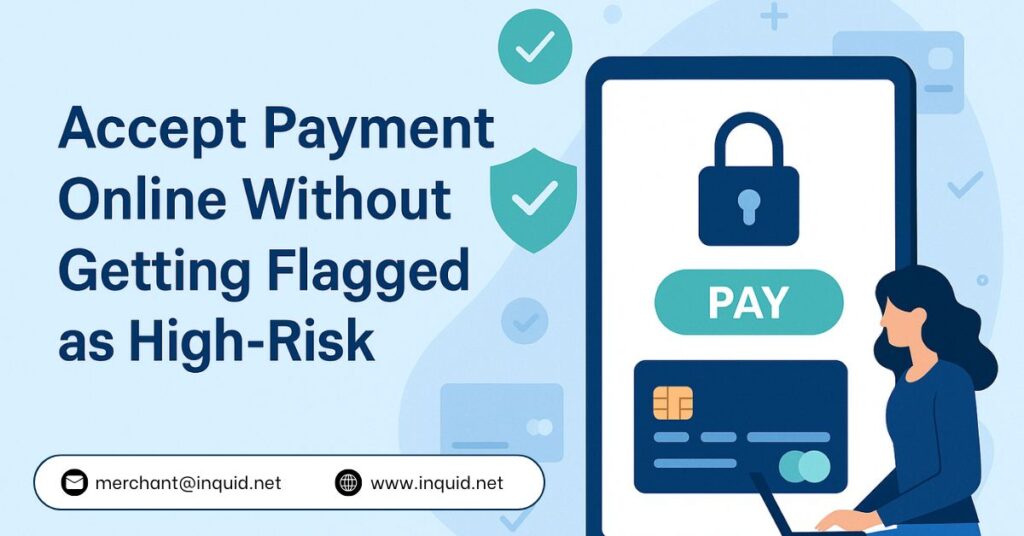
Accepting payments online should be straightforward, but for many businesses, the process comes with red tape. If your products, traffic source, or refund policies raise concerns, your attempt to accept payment online might get flagged as high-risk—often without clear explanation.
Once flagged, getting approved for standard payment processing becomes difficult. That’s why it’s important to understand how to structure your online payment setup in a way that avoids triggering unnecessary risk signals.
1. Choose the Right Payment Gateway for Your Model
Not all payment gateways are built the same. Some cater only to low-risk businesses, while others work with high-risk models but charge higher fees or demand extra documentation. If you’re using a general gateway for a niche or complex model, the mismatch might cause your account to be flagged or frozen during underwriting.
To find a provider that suits your specific setup, this guide on accepting payment online with the best gateways is a good place to start.
2. Be Transparent with What You’re Selling
Many businesses get flagged because their product descriptions are vague, misleading, or incomplete. Payment providers want to know exactly what customers are buying, what the terms are, and how refunds or cancellations are handled.
If you sell digital services, subscriptions, nutraceuticals, or anything involving ongoing charges, be clear about all billing terms on your website. List ingredients, pricing details, cancellation rules, and delivery timelines.
Even something as simple as hiding the terms in a small footer can lead to suspicion during onboarding.
3. Avoid Processing Before Approval
Some businesses start processing payments through a new gateway as soon as they integrate it—even before the account is fully approved. This is a fast track to being flagged as high-risk.
Always wait for full underwriting clearance before pushing transactions. Premature processing is considered a serious violation by most providers and can result in permanent bans across acquiring networks.
4. Keep Your Billing Descriptor Clear and Recognizable
Chargebacks are one of the main reasons accounts get classified as high-risk. One overlooked cause of chargebacks? Unclear billing descriptors.
If your customer sees an unknown name or confusing reference on their credit card statement, they may file a dispute—leading to chargeback accumulation. To avoid this, make sure your billing descriptor reflects your brand and communicates what the customer bought.
Want to accept credit cards globally without confusion? Check out this article on how to accept credit card payments worldwide.
5. Match Marketing with Product and Fulfillment
Another red flag is when your website and ads say one thing, but your actual service or product does something else entirely. This mismatch between marketing and fulfillment leads to refund requests, chargebacks, and complaints—all of which make it harder to accept payment online without scrutiny from payment providers.
For example, advertising a “100% guaranteed result” for a subscription service while offering no refunds can be a trigger for disputes. Always align your messaging with what’s delivered.
6. Understand How Risk Categories Are Assigned
You don’t have to be doing anything illegal or shady to be flagged. Sometimes, it’s the industry you’re in. Supplements, online coaching, streaming services, and adult content are commonly labeled as high-risk—even if they operate legally.
If your business fits this profile, read this guide on processing credit cards in a flagged industry to understand your options better.
7. Keep the Checkout Process Compliant
Your checkout page should include key trust elements like terms and conditions, refund policy, privacy policy, and a working support contact. These pages should be easy to find and accessible before a customer enters payment information.
Missing or vague policies often lead to higher disputes and risk classifications. If you’re aiming for quick setup without these basics, you might end up flagged regardless of your industry.
Want a faster setup process with fewer roadblocks? Here’s a helpful read on accepting credit card payments with no setup hassle.
Final Thoughts
Accepting payments online without being labeled high-risk isn’t about hiding your business model—it’s about presenting it clearly, correctly, and in line with what payment providers expect. A few smart adjustments to your site, policies, and application process can help you accept payment online without unnecessary flags and keep your account active longer.
FAQ
What makes a business high-risk for payment processing?
Factors include high chargebacks, complex billing models, certain industries, unclear terms, or mismatched marketing.
Can I appeal if I’m flagged as high-risk?
Yes, but approval depends on showing clear documentation, updated policies, and lower risk indicators.
Do all payment providers flag the same businesses?
No. Some specialize in high-risk industries, while others avoid them completely. Finding the right provider makes all the difference.
